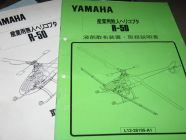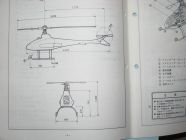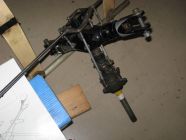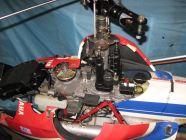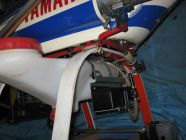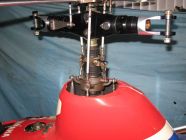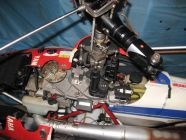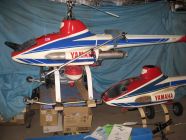Yamaha R50
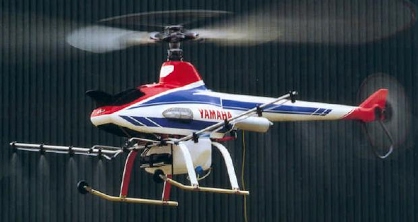 |
Specification:
|
|||||||||||||||||||
| Documents: | ||||||||||||||||||||
Yamaha's development of utility-use unmanned helicopters began with a request in 1983 from the external branch of the
Japanese Ministry of Agriculture, Forestry and Fisheries which was also in charge of agricultural aviation. They wanted an
unmanned helicopter for crop dusting that could help reduce labor and costs in Japan's labor-strapped rice farming industry.
After extensive research and development efforts, Yamaha completed its first utility-use unmanned helicopter, the 'R-50' in 1987.
It was the world's first unmanned helicopter for crop dusting with a 20 kg payload. Adoption at agricultural schools around the
country began in 1988, and in 1991 the Ministry of Agriculture, Forestry and Fisheries of Japan passed guidelines for training in
the use of the R-50 for crop dusting of rice paddies.
With this, Yamaha Motor began full-scale marketing of the R-50 helicopter, powered by a liquid-cooled, 2-stroke, 98cc, 12 hp engine.
The helicopter enabled high-value crops in difficult-to-access paddy fields, often on very hilly land, to be sprayed with pesticides and
specialised nutrients. In some cases this replaced labour which had been done by hand at extreme expense, or work done by manned
full-scale helicopters which was equally as expensive but faster.
By 1998, Yamaha had developed an entirely new machine based on the research work it had done over the previous seven years.
The RMAX brought with it dramatic improvements in functionality and operability. Whereas the R-50 had been powered by a 98cc,
12 hp engine, the RMAX mounted a liquid-cooled 2-stroke, 246cc, horizontally-opposed twin-cylinder, crankcase reed valve
intake engine rated at 21 hp.

